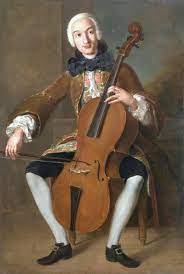Luigi Boccherini (1743–1805) was an Italian composer and cellist, renowned for his elegant and charming compositions. His music, often associated with the Rococo and early Classical periods, is celebrated for its refined melodies, graceful harmonies, and intricate structures. Boccherini’s works, particularly his chamber music, played a crucial role in shaping the classical tradition. Here are ten of his best compositions, each exemplifying his mastery of form, texture, and lyrical expression.
1. String Quintet in E Major, Op. 11, No. 5 (G 275) – “Minuet”
The “Minuet” from Boccherini’s String Quintet in E Major is undoubtedly his most famous piece. This charming and graceful dance movement has become synonymous with the elegance of 18th-century music. The lilting rhythm and delicate melodic lines capture the essence of Boccherini’s style, making it a favorite in both concert halls and popular culture.
2. Cello Concerto No. 9 in B-flat Major, G. 482
Boccherini, a cellist himself, composed several cello concertos that showcase his deep understanding of the instrument. The Cello Concerto No. 9 in B-flat Major is perhaps the most famous of these. Its lyrical second movement, with its expressive and singing quality, highlights the cello’s capacity for emotional depth, while the outer movements are lively and virtuosic, reflecting Boccherini’s technical prowess.
3. String Quartet in D Major, Op. 10, No. 3 (G 179) – “La Musica Notturna delle Strade di Madrid”
“La Musica Notturna delle Strade di Madrid” (“Night Music of the Streets of Madrid”) is one of Boccherini’s most innovative and evocative works. This string quartet depicts the sounds of nighttime Madrid, with movements that imitate the ringing of church bells, the strumming of guitars, and the bustling streets. It is a vivid and programmatic work that showcases Boccherini’s ability to paint musical pictures.
4. Stabat Mater, G. 532
Boccherini’s Stabat Mater is a poignant and expressive setting of the medieval hymn that meditates on the suffering of the Virgin Mary at the foot of the cross. Composed for a soprano soloist and a small string ensemble, this work is notable for its lyrical beauty and emotional intensity, making it one of Boccherini’s most profound religious compositions.
5. Guitar Quintet No. 4 in D Major, G. 448 – “Fandango”
The “Fandango” from the Guitar Quintet No. 4 in D Major is a lively and spirited piece that reflects the influence of Spanish music on Boccherini. The quintet, which includes the guitar as part of the ensemble, features a finale that is a vigorous fandango, complete with castanet-like rhythms and vibrant melodies, capturing the fiery energy of the Spanish dance.
6. Symphony in D Minor, Op. 12, No. 4 (G 506) – “La Casa del Diavolo”
“La Casa del Diavolo” (“The House of the Devil”) is one of Boccherini’s most dramatic symphonies. It is inspired by Gluck’s Don Juan and is known for its intense and stormy character. The symphony’s dark harmonies, dynamic contrasts, and driving rhythms create a sense of urgency and drama, making it one of Boccherini’s most compelling orchestral works.
7. String Quintet in C Major, Op. 30, No. 6 (G 324) – “La Caccia”
“La Caccia” (“The Hunt”) is a lively and playful string quintet that evokes the sounds and atmosphere of a hunt. The use of hunting calls and rhythmic galloping figures throughout the quintet demonstrates Boccherini’s skill in creating vivid musical scenes. The work is a delightful example of his ability to blend elegance with rustic charm.
8. Concerto for Piano and Orchestra in E-flat Major, G. 487
Boccherini’s Piano Concerto in E-flat Major is a lesser-known gem that showcases his talent for writing for the keyboard. The concerto is characterized by its graceful melodies, light textures, and sparkling piano passages. The balance between the piano and orchestra is particularly well-handled, with the piano often engaging in a delicate dialogue with the other instruments.
9. Six String Quartets, Op. 32
The Six String Quartets, Op. 32, are among Boccherini’s most sophisticated chamber works. Each quartet displays his characteristic elegance and refinement, with intricate interplay between the instruments. The quartets are marked by their lyrical melodies, clear structures, and a sense of balance and proportion that is typical of Boccherini’s chamber music.
10. Missa solemnis in C Minor, G. 528
The Missa solemnis in C Minor is a grand and solemn work that reflects Boccherini’s skill in writing sacred music. The mass is notable for its dramatic use of choral and orchestral forces, as well as its expressive solo passages. The work combines the grandeur of the Classical mass tradition with Boccherini’s own lyrical style, resulting in a composition of great spiritual depth and beauty.
Boccherini’s music is characterized by its grace, lyricism, and elegance. These ten compositions provide a glimpse into the wide-ranging talent of a composer who, while often overshadowed by his contemporaries, remains a significant figure in the history of classical music. Boccherini’s works continue to enchant audiences with their charm and sophistication, ensuring his place in the pantheon of great composers.


Comments are closed